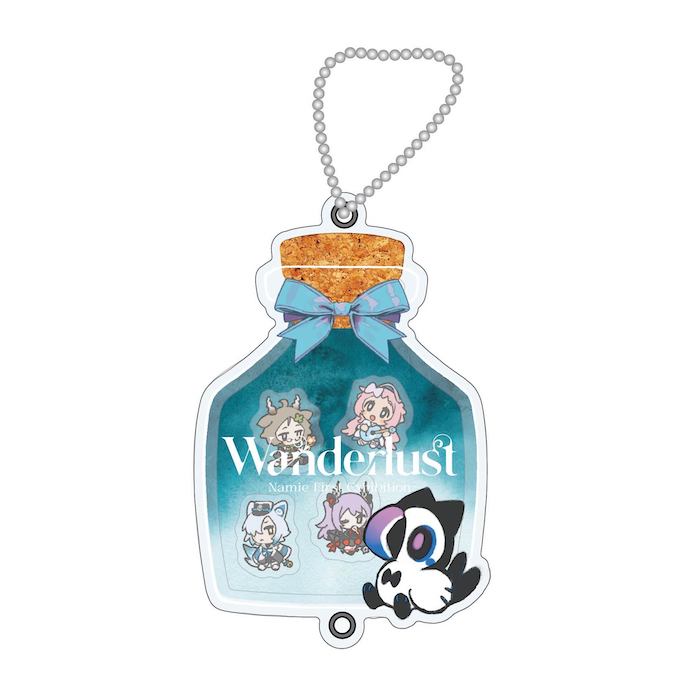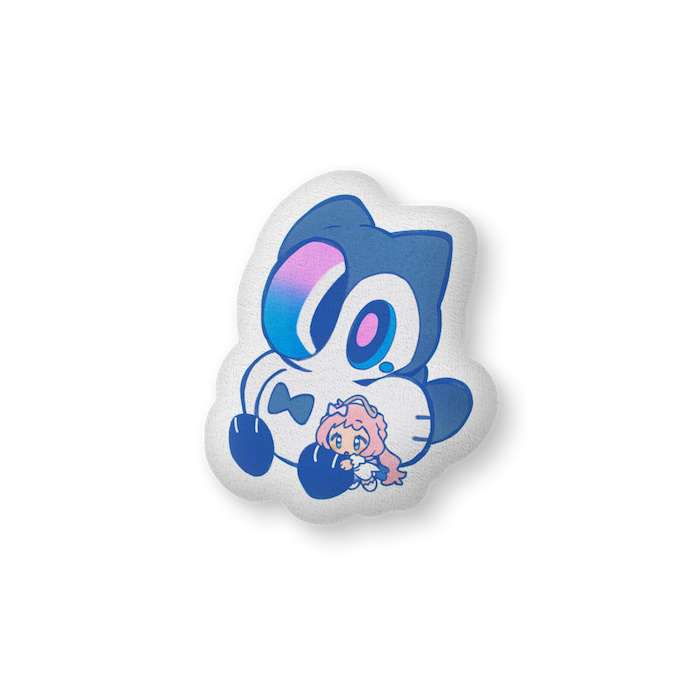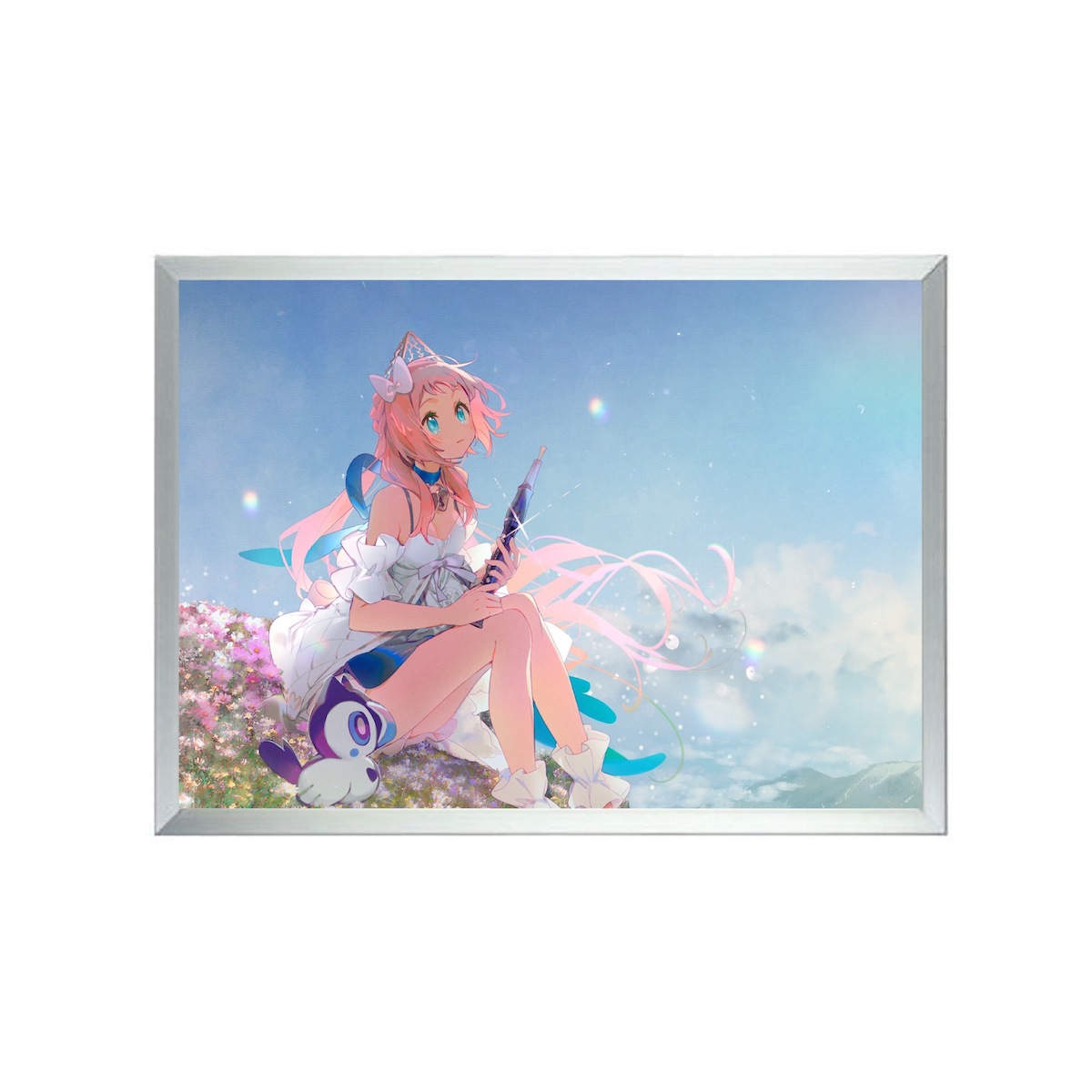イラストの使われ方から逆算する。イラストレーター・Namieが「絵を描く前に考えること」とは?
構成/ナカニシキュウ
Namieさんがこれまでに手がけてきた、ライトノベルの装画や『アークナイツ』『Fate/Grand Order』といった人気ゲームのイラストに加えて、本展にあわせて描き下ろされた4人のオリジナルキャラクターのイラストを展示します。
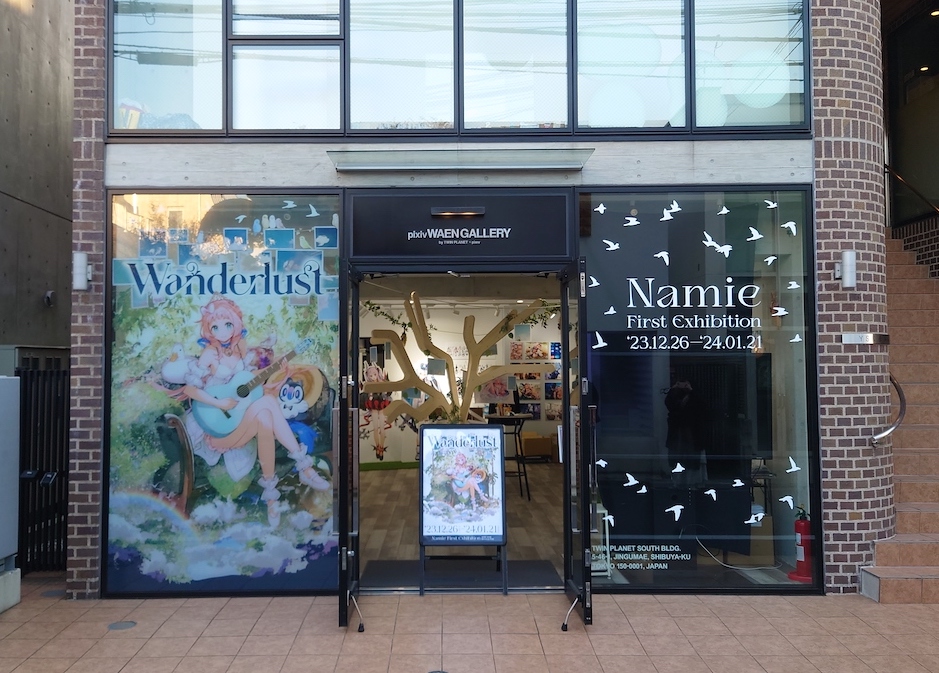
オーストラリア在住のNamieさん。「自分の描きたいものを描こう」と思えた12歳のときのある体験や、プロとして1枚1枚のイラストに全力で向かい合う姿勢、そして、イラストを描く前にどんなことを考えているのかをお話いただきました。
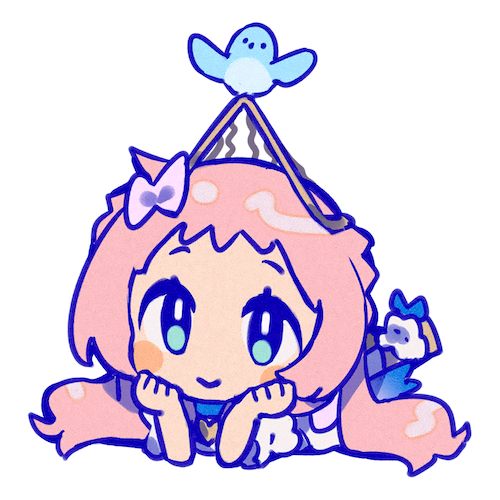
- Namie
- オーストラリア在住のイラストレーター。柔らかい色使いと可愛らしいキャラクターが得意でSNSを中心に人気を博す。主な参加作品はアークナイツのキャラクターデザイン(ミヅキ、ゴールデングロー)、Fate/Grand Order概念礼装やゲームの周年イラストなど。
Namieさんのイラストメイキングとインタビューが見られる「DrawTube」のPart1を公開中です!
ネットの罵声でかえって覚悟が決まった
── 絵を描き始めたのはいつごろですか?

── 素敵なきっかけですね。そのころはどんな絵を描いていましたか?

── そうした環境からプロを目指すようになったきっかけはありますか?

── それからプロの道に進むんですね。最初に請けた仕事を教えてください。

── その後、仕事に転機は訪れましたか?

はい。初めて誇りに思えた仕事は、『Fate/Grand Order』からの依頼でした。おそらくpixivの「Fate/Grand Order イラストコンテスト」で受賞したのをきっかけにお声がけいただいたんですが、ずっと労力に見合わない仕事ばかりをしてきて、私に「イラストを描くなんて無駄だよ」と忠告した人たちは正しかったのかもしれないと思い始めていた時期でもあったので、FGOから連絡をもらえて、「自分は正しい方向に進めているんだ」と思えたんです。とても緊張しましたが、全力を尽くしました。
イラストコンテストでTYPE-MOON賞を受賞した作品
FGOの2018年お正月イベントのイラスト
── pixivがきっかけになったのなら嬉しいです。作風として影響を受けた作家さんはいますか?

── うわあ……。

壁にぶつかったら自分の画風を少しだけ変える
── 現在、プロのイラストレーターとして大事にしていることは?

── 絵を描くときのプロセスについて教えてください。

── 絵を描くときに、とくに気を使っていることはありますか?

2022年のオンライン作画フェス「Drawfest3」にてNamieさんが描いた原神の珊瑚宮心海
── 時間を重ねて、ご自身の画風に変化は感じますか?

── 愛用している画材は?

デジタルひと筋です!
── お気に入りのツールやブラシなどはありますか?

長年の試行錯誤の末、いろんな種類のブラシを使ってテクスチャーを表現することが好きになりました。PhotoshopのCamera Rawプラグインはすごく便利です。本来は写真の補正をするためのツールですが、イラストを描くうえでもかなり役に立つんですよ。これはかなりオススメです。
複雑な絵では描くべき要素をリスト化する
── ご自身の作品の長所やアピールポイントがあれば教えてください。

── その「私自身が惹かれるポイント」もぜひ教えていただきたいです。

── おっしゃるように情報量の多い絵をよく描かれている印象ですが、どれもスッキリしていて見やすいです。要素の多い絵を描くときに心がけていることはありますか?

── 必要な要素を洗い出してから、どうやってまとめるかを考えていくわけですね。

── Namieさんの描くキャラクターは、縦長でくりっとした目がとてもかわいいです。目の描き方で影響を受けた作家さんなどはいますか?

── 作業工程で最も時間をかけるのはどこですか?

新しい技法を試すときやちょっとしたスランプのときは、下絵のあとの完成させるまでの作業に一番時間がかかります。単にアイデアが浮かばないときは、下絵を何枚も描くのに時間がかかる場合もありますし……その代わり、下絵さえ完成すればあとはわりと何も考えずに手が勝手に動いてくれるんですけど。それは経験の賜物だと思います。時と場合によって、一番時間のかかる作業は変わってきますね。
── Namieさんにとって、「よい作品」とは?

── 将来イラストレーターになろうと考えている方へ向けて、何かアドバイスはありますか?

誰しも、自分が何をやっているかなんてわからないものです。私自身、自分が何をしているのかわかっていません。それでも自分のやりたいことを貫いていけば、いつか自分にしか作れない作品に共感してくれる人がきっと現れます。努力が無駄になることは決してありません。10年前、5年前……2年前でさえも、今の自分がこうやって活動していることなど想像がつかなかった。どうやって自分が今いる地点まで到達したのかは誰にもわからないし、私にもわかりません。あなたも、のちに成功して自分の道のりを振り返ったとき、きっと同じことを思うはずです。
遠い目標はなく今やっていることを楽しみたい
── 個展を開催することになった経緯を教えてください。

個展のために4人のオリジナルキャラクターが描き下ろされている
── 個展のタイトル「Wanderlust」は旅行や探検に対する渇望を表すドイツ語です。どういう思いが込められているのでしょうか。

個展の開催地が自分の住んでいるオーストラリアから遠く離れた東京であることを考えたときに、旅を通じて成長する物語が思い浮かびました。キービジュアルに描いた女の子はアレットといって、以前「pixivファンタジア」という企画に参加する際に生まれたキャラクターなんですね。彼女を“鳥と旅をしているキャラクター”という設定にしたこともあって、「Wanderlust」という言葉がぴったりなんじゃないかと。あとはグラフィックデザイン的な観点からも、個人的に「W」「D」「L」「S」「T」といった文字のフォルムが好きなので、いいロゴができるんじゃないかと思ったのも決め手になりました。
── 個展のキービジュアルはどんな風に出来上がったのでしょうか? ギャラリーからのリクエストはありましたか?

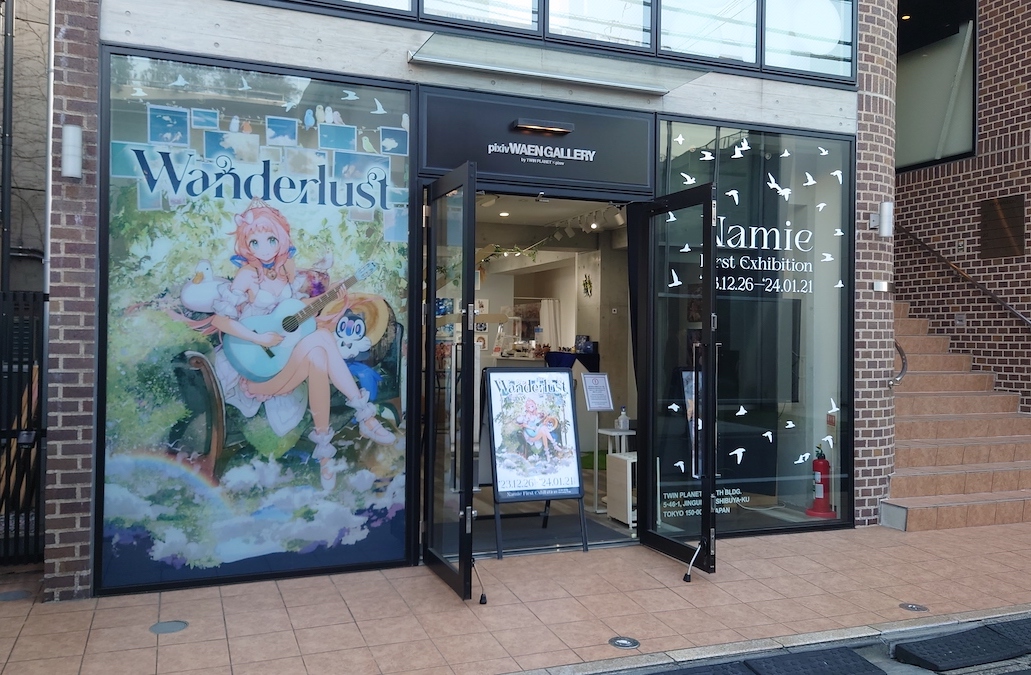
── その「個展に求める雰囲気」というのは?

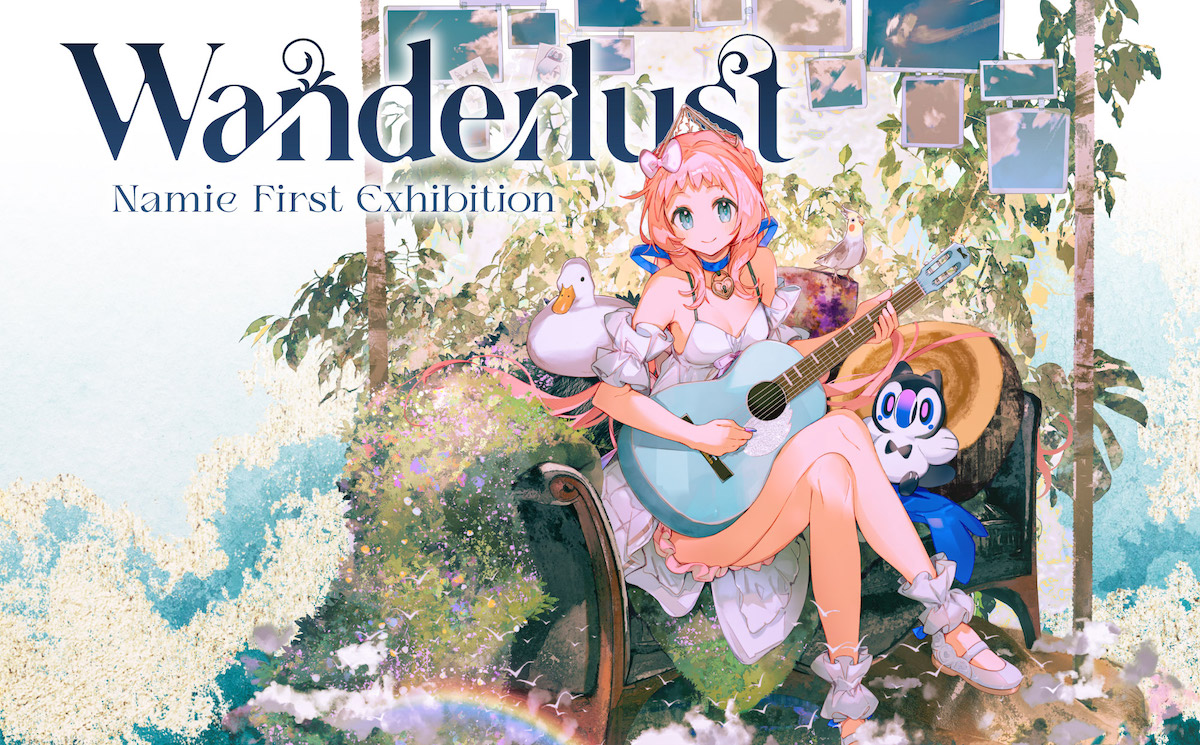
── 構図や配色はどのように決めていったのでしょうか。

構図としては、どこかにロゴを入れるスペースを確保することを優先しました。また、前景、中景、背景に立体感を持たせて、グッズにも転用しやすいよう工夫しています。配色についてはまずアレットに似合う色を使うことを中心に考えて、それに加えておとぎ話のようなメルヘンチックな風景を描きたいと思い、全体的にナチュラルな色合いを心がけましたね。
── 背景の植物や草などは、ひとつひとつをあえて描き込まずに情報量が制限されています。こうした描き込みのコントロールはどのような意識で?

── 個展に来場される方へ向けて、注目ポイントを教えてください。

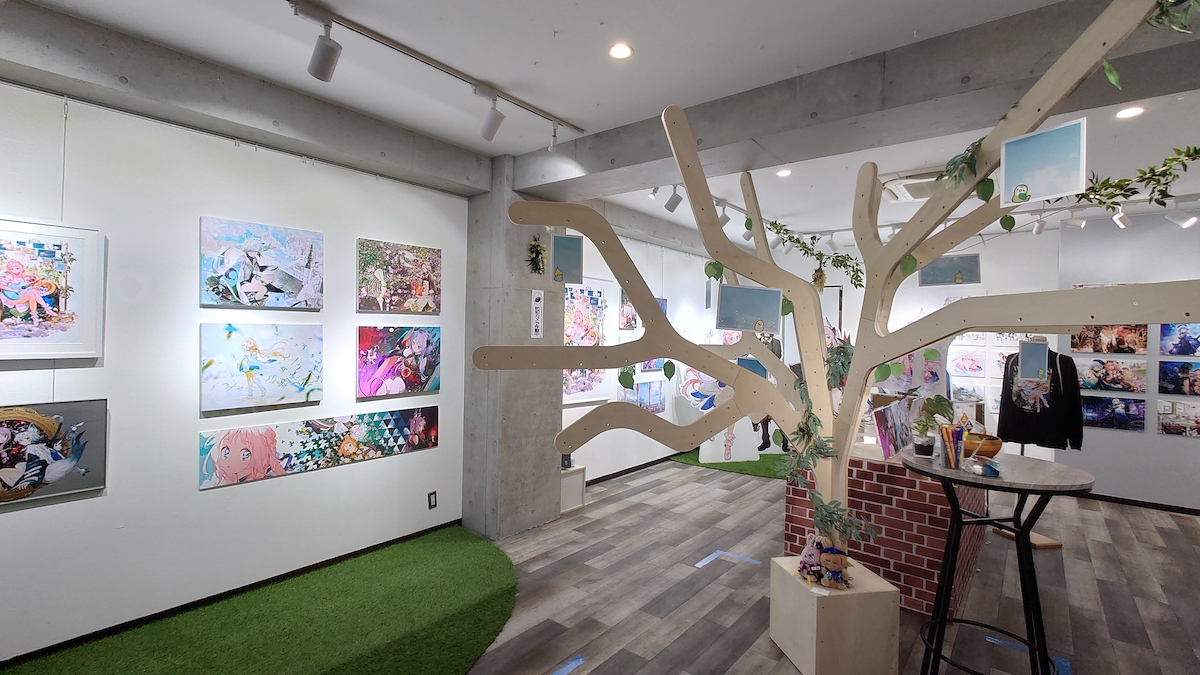
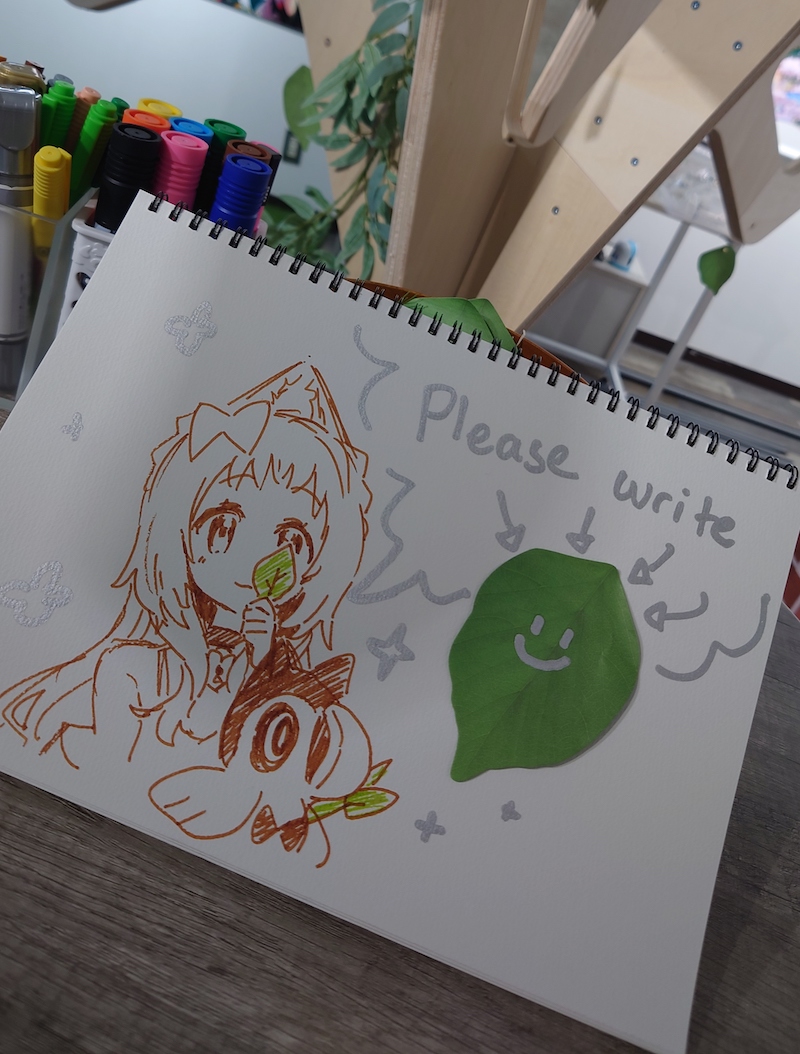
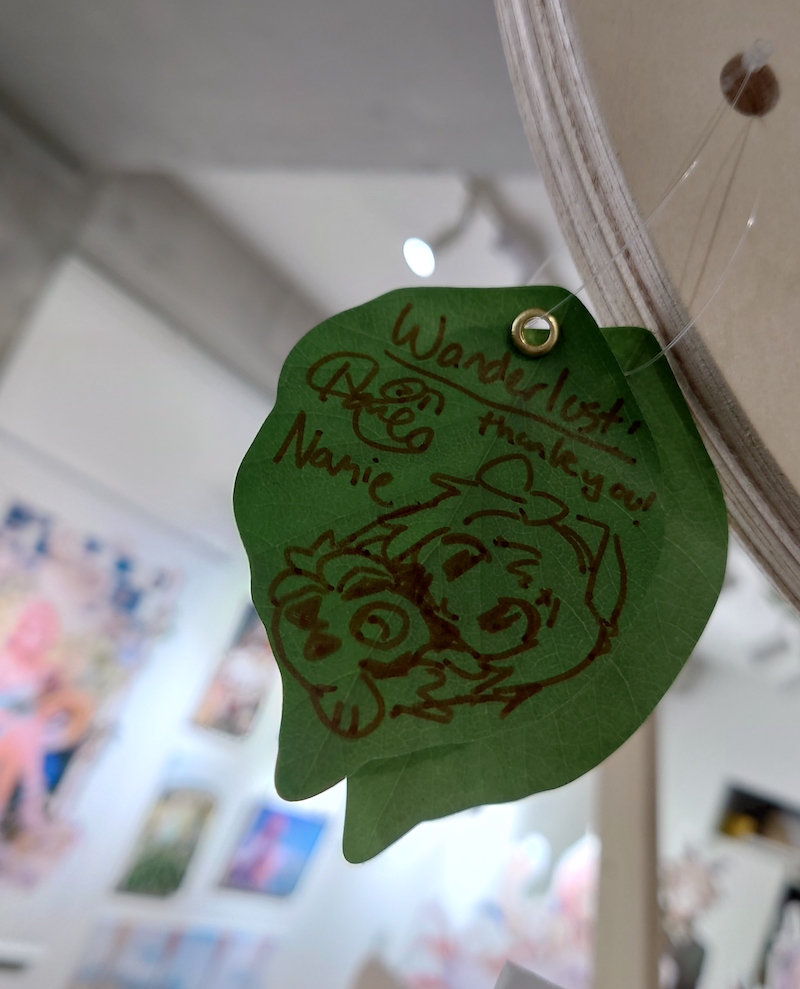
── 楽しみにしているグッズなどはありますか?

缶やブランケット、クッションなど、早くなで回して顔を埋めたいです(笑)。あと、シャカシャカアクキー? 昔からずっとこういうグッズを作りたかったので、夢が叶ってうれしいです。早くキーホルダーに直に触れて、5歳児みたいにはしゃぎながら遊びたいですね。
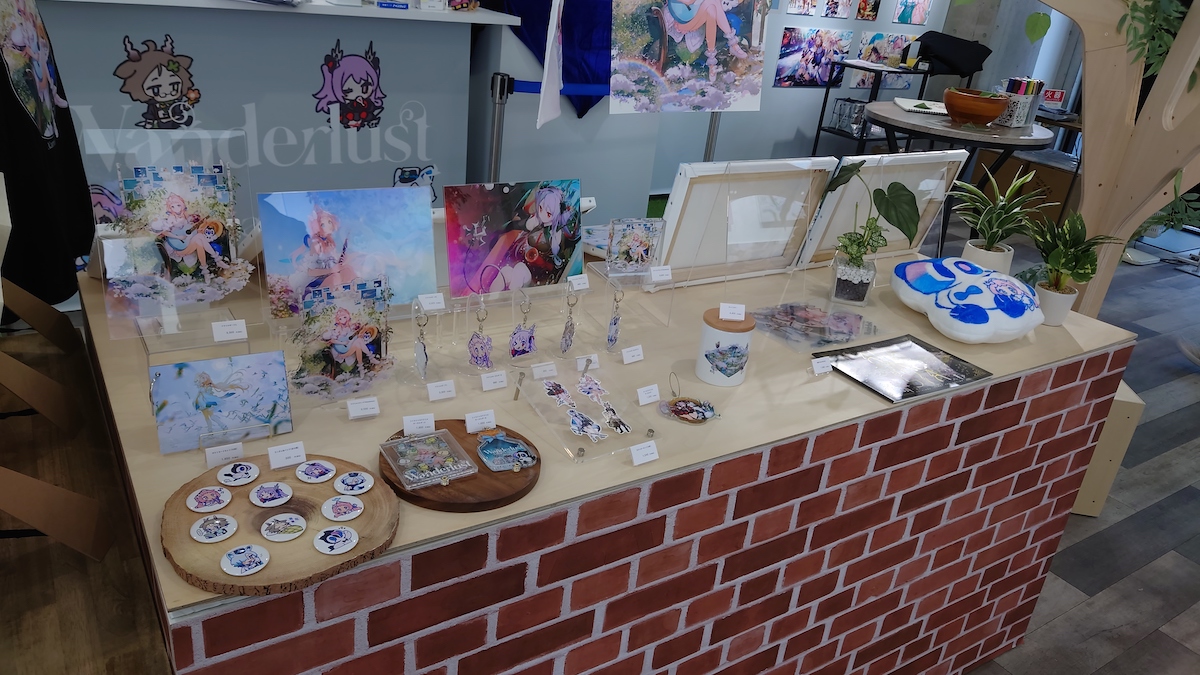
── (笑)。今後の目標や、将来の夢があれば教えてください。

1月21日(日)まで開催! Namie初個展「Wanderlust」
pixivとツインプラネットが共同運営するギャラリー「pixiv WAEN GALLERY by TWINPLANET × pixiv」にて、Namieさんの初個展「Wanderlust」が1月21日(日)まで開催中です。
本展のために描き下ろされた4人のオリジナルキャラクターと、それをモチーフにした作品を展示します。加えて、ライトノベル『鏡のむこうの最果て図書館 光の勇者と偽りの魔王』のカバーイラストや「アークナイツ」のキャラクターデザイン(ゴールデングロー、ミヅキ)、「Fate/Grand Order」の概念礼装やゲームの周年イラストなど、合計約50点を展示します。
植物をイメージしたナチュラルな雰囲気の内装もお楽しみください。皆様のご来場をお待ちしております。
開催期間:2023年12月26日(火)~2024年1月21日(日)
※2023年12月29日(金)〜2024年1月5日(金)は休館
入場無料
所在地:東京都渋谷区神宮前5-46-1 TWIN PLANET South BLDG. 1F
営業時間:12:00~19:00
一部グッズはWEB販売も!
BOOTHにて個展販売グッズの一部をご購入いただけます。こだわりの鏡面加工アートや、ちびキャラがかわいいアクリルキーホルダーなど、素敵なアイテムが揃っていますので、ぜひ覗いてみください!





